Encountering a dragon in D&D should be nothing short of epic. Whether your party is trading blows with an elemental force of destruction or negotiating with a being that has watched empires rise and fall, the moment should feel awe-inspiring. In Dragon Delves, you'll come across ten of these legendary creatures in their lairs—each featured in a one-shot adventure designed for characters level 1 to 12.
If you're preparing to run an encounter with a dragon and want to make the most of the dragons' revamped stat blocks from the Monster Manual, this article has everything you need.
- How to Play a Dragon Like a Fearsome Apex Predator
- Devious Dragon Tactics
- A Dragon's Tactical Advantages
Your Ultimate Pass to Draconic Adventure
With the Dragon Delves Ultimate Bundle, you'll receive a D&D Beyond digital copy of the book, a physical copy, the exclusive Ancient Gold Dragon Digital Dice Set, and the Dragon Lairs Digital Maps Pack with 5 digital maps and 10 new stickers for all of your dragon-themed adventures.
How to Play a Dragon Like a Fearsome Apex Predator
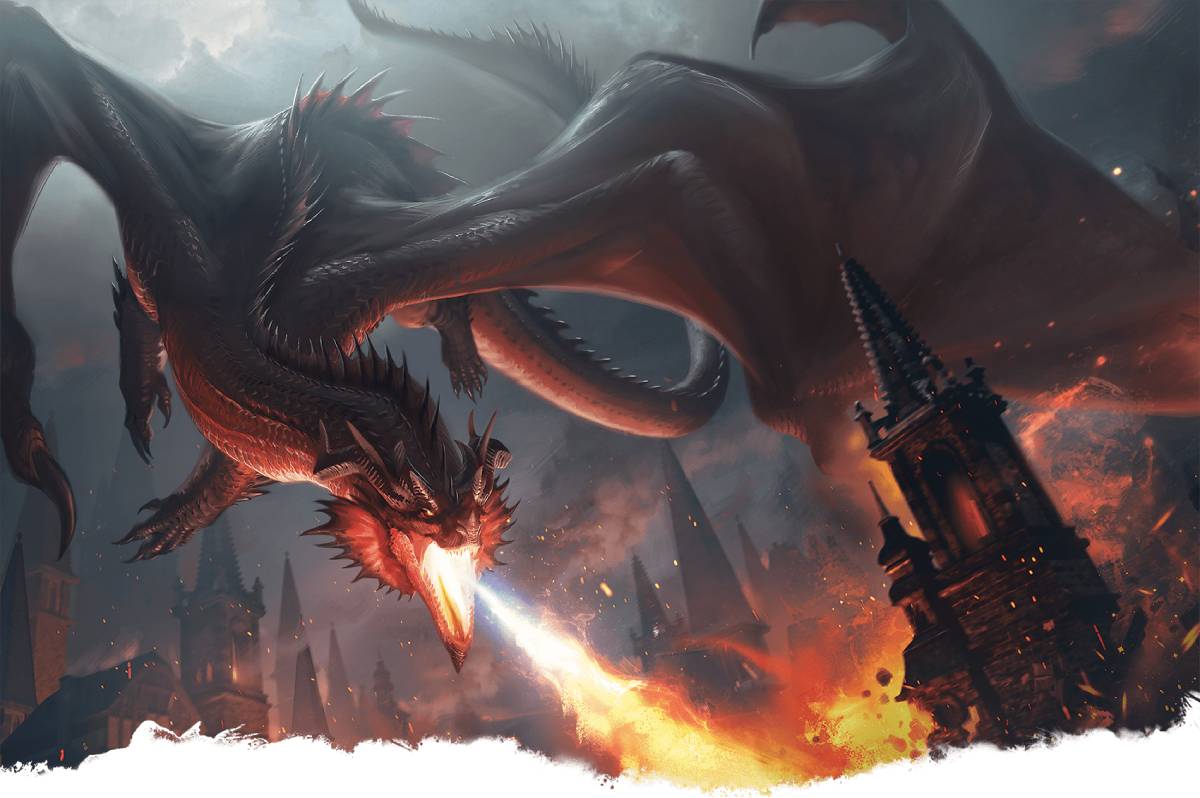
When an Ancient Red Dragon is bearing down on an adventuring party, maw wreathed in flames, and it uses Command to make the party's Paladin grovel before it, the adventurers may feel like they are well and truly cooked.
In the new Monster Manual, elder dragons saw a boost to their power with things like spellcasting, enhanced Legendary Actions, and more Legendary Actions and Legendary Resistances in their lairs.
Now, after the dragon has let loose its breath weapon, it won't need to recharge before it uses more elemental effects to eviscerate its prey. The aforementioned Ancient Red Dragon has the ability to cast a level 3 Scorching Ray at will (even as a Legendary Action) and has access to a devastating level 6 Fireball once per day.
These legendary creatures have been reimagined to evoke the same sense of terror and majesty as the stories describe. Representing a force of both magic and might, they should command the battlefield with overwhelming presence.
Not Every Dragon Encounter is an Epic Battle to the Death
In D&D, there are two main subgroups of dragons: metallic and chromatic. Chromatic dragons tend to be evil-aligned, aggressive, and territorial, whereas metallic dragons are more likely to be good-aligned and engage with potential foes through parley, passive effects, or mutual goals. But, just because a red dragon is domineering doesn't mean it can't be reasoned with—or strike a deal if it suits its ambitions.
The adventures in Dragon Delves explores both sides of this spectrum, offering encounters where dragons might become awesome allies or vicious enemies.
Devious Dragon Tactics
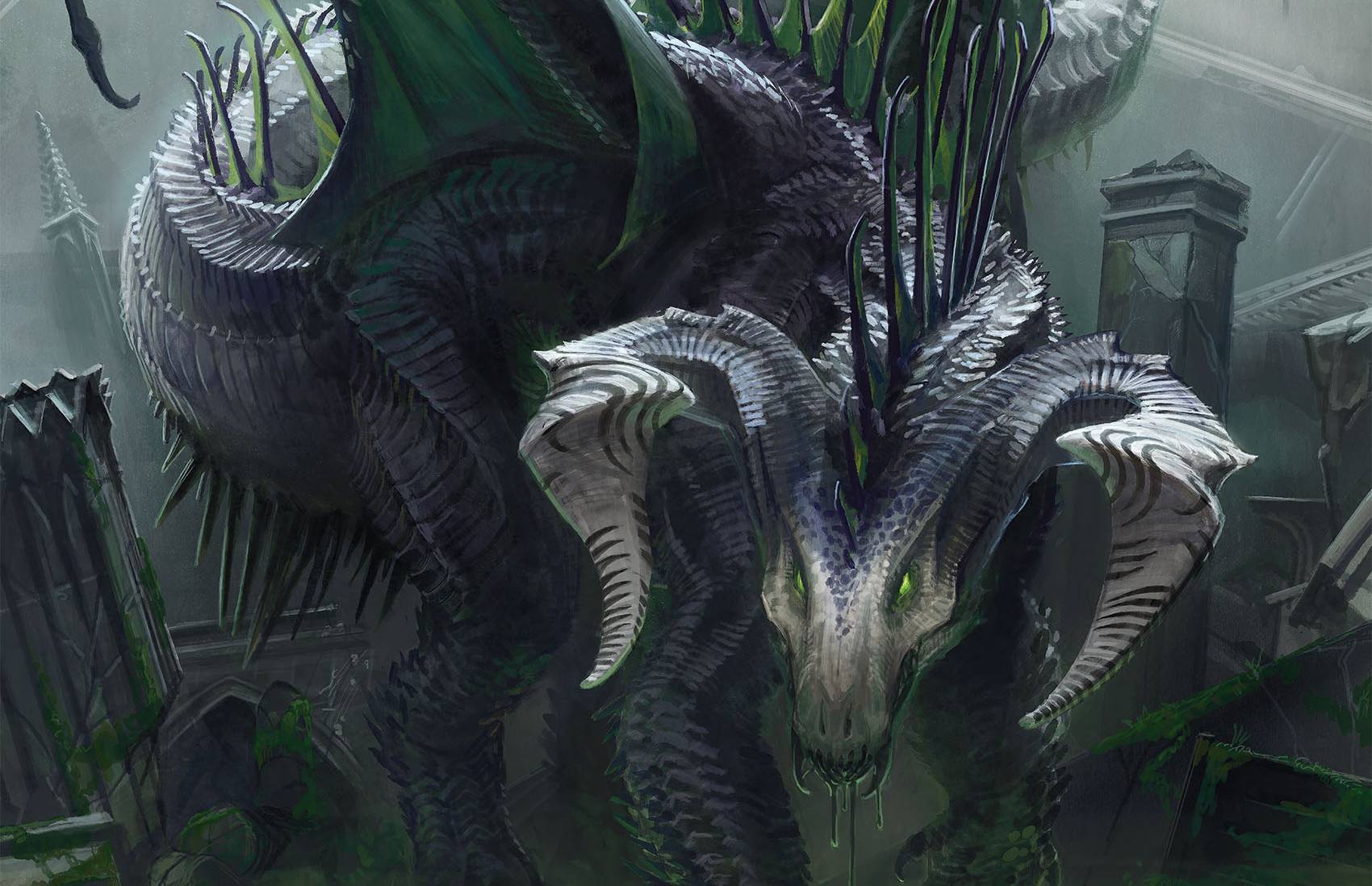
Dragons are extremely intelligent predators who are absolutely lethal when they use their strengths to their advantage. While they have a variety of strategies for disposing of their foes, here are some general tips that can help your dragon live up to its mythically destructive capabilities:
Surprise the Party With a Breath Weapon
A dragon's breath weapon is almost always at its most powerful when unleashed on a group of clumped-up, unaware victims.
But, the scale of a dragon can range from Medium-sized wyrmlings to Gargantuan-sized ancient dragons. How can these older, massive creatures catch enemies off guard?
With a bit of creativity, a dragon can utilize its proficiency in Stealth to remain hidden until it's time to strike.
For example, a white dragon could swoop in on its prey during a blizzard, or a blue dragon could use a lightning storm as cover during its descent. Meanwhile, red and black dragons could be lying in wait to ambush their foes, all but submerged in lava or acid, respectively.
Once the dragon surprises an adventuring party with one breath weapon attack, they may decide to spread out to avoid getting caught in another. But strategic dragons typically won't chase their prey with reckless abandon. Most dragons would not have reached adulthood without knowing that getting caught in the open, surrounded by valiant warriors wielding Dragon Slayers, are some of the biggest threats they face.
Don't Get Surrounded
Dragons rarely want to be on the ground, as it opens them up to attacks from melee-damage dealers. Instead, they want to use their Fly Speed in conjunction with a barrage of deadly ranged attacks, which can easily hand them a victory against a powerful group of adventurers.
For this reason, their lairs are typically big enough to fly around in and have perches for the dragon to gain the high ground and cover over any would-be invaders.
That said, even with their new spellcasting abilities from the Monster Manual, dragons have to take a calculated risk in battle. Outside of their ranged breath weapon, their most reliable source of damage dealing is their Rend attack, which only has a reach of 10 feet.
Luckily for devious dragons, there's an easy way to ensure they can use their Rend attack while keeping a safe distance from the majority of their foes:
Grapple, Fly, Kill, and Repeat
If the party has spread out to avoid getting caught in another breath weapon attack or area-of-effect spell, elder dragons can target prey that is ripe for the picking—literally.
Being Huge or Gargantuan creatures, elder dragons can close the distance on their Medium-sized mark, use an Unarmed Strike and attempt to grapple them, and then use their remaining movement to fly into the air unimpeded.
Once the dragon is in the air, any creature without a Fly Speed or potent ranged attacks won't be able to do much harm to the dragon. The dragon, meanwhile, can use its Rend attacks to make short work of the Grappled creature. Keep in mind that the dragon's Grappled target can still make attacks against the dragon—but a 1v1 with a dragon doesn't produce the best odds.
The dragon can then finish off their captured prey and move on to the next attacker. The cruelest dragons will drop the downed creature near one of the creature's allies, then hit them both with a breath weapon when the ally attempts to aid their companion.
If the target avoids the dragon's grapple attempt, the dragon doesn't want to stick around to let melee enemies close in. Instead, it can take off and use its spellcasting and breath weapon to create another opportunity to grapple a singled-out target.
Grappling With Monsters
Monsters can take any of the actions available to players, so they can use the Attack action to make an Unarmed Strike and choose the Grapple option. But, having access to the Multiattack action does not give monsters more than one shot at grappling per turn. Multiattack is a special action and does not qualify as an Attack action, which means it does not grant multiple attempts to grapple a target.
A Dragon's Tactical Advantages
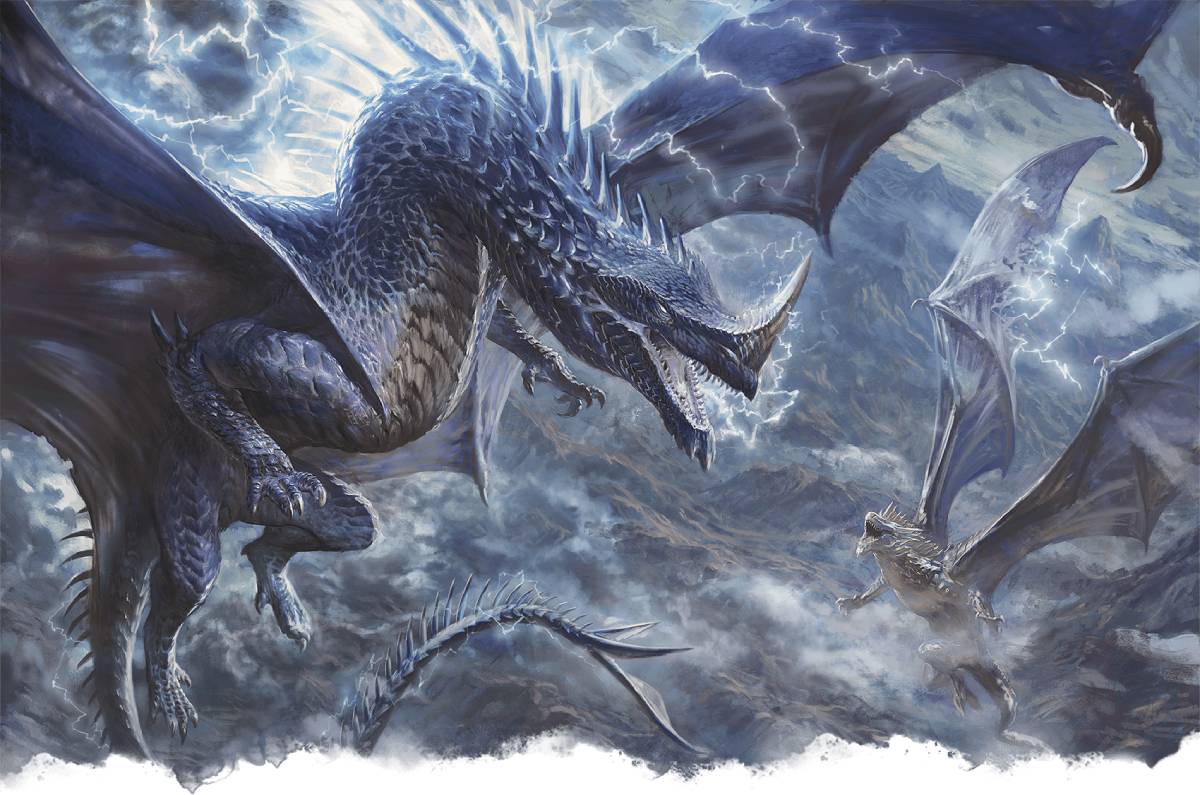
Most dragons have a litany of resources at their disposal to outmaneuver their enemies. When planning an encounter with one of these mythological creatures, it's essential to consider how they will impact the party's journey to and eventual battle with the dragon.
Use Its Environment
All dragons have a unique movement speed that can aid them in battle. Most dragons don't often travel far from their lair, so they should be able to use the advantageous landscape to shape the battle.
- Green and Black Dragons have a Swim Speed, so instead of grappling a creature and flying away, they could instead dive into a swamp or lake and drown their prey at their leisure.
- White and Blue Dragons have a Burrow Speed, allowing them to effectively ambush unsuspecting adventurers.
- Red Dragons have a Climb Speed, which can help them navigate cramped areas where they can't capitalize on their Fly Speed.
Recruit Minions
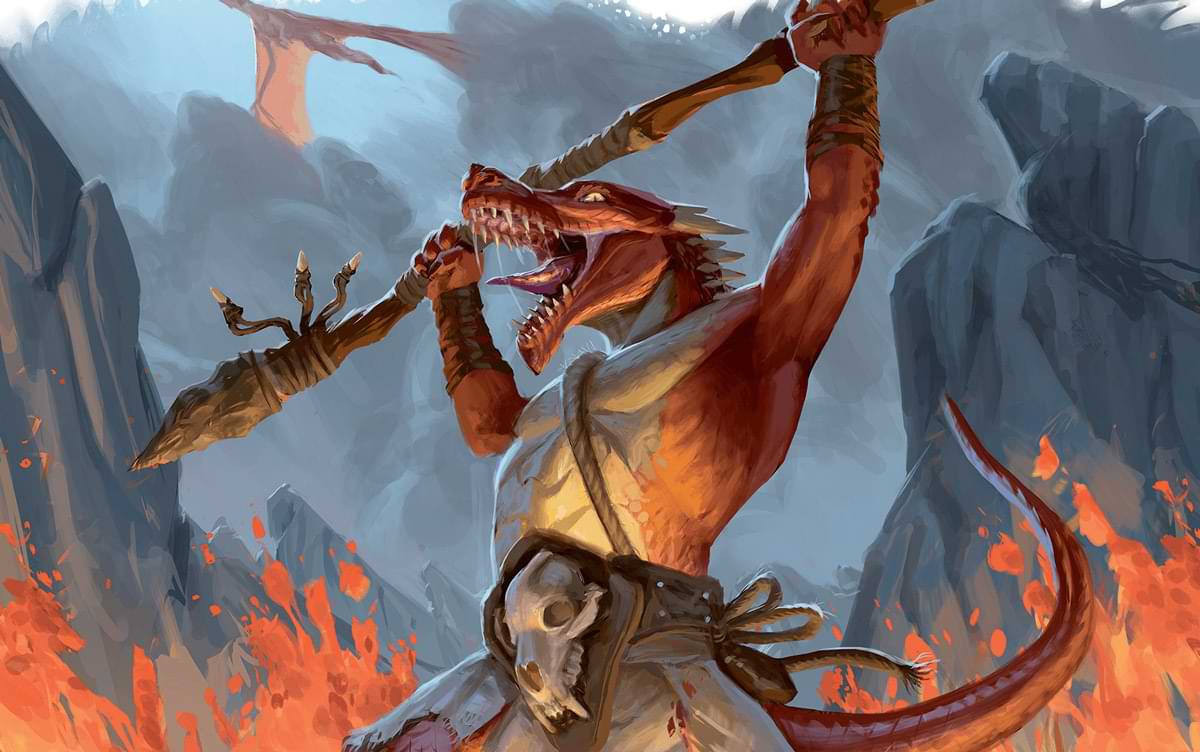
Due to their intelligence, fearsome power, and sense of superiority, most chromatic dragons thrive off being followed and worshipped. This means that most of these beings will have an entourage of expendable cannon fodder at hand to manipulate the battlefield strategically.
Beyond soaking damage in combat, minions can harry party members by getting up close to ranged characters, thereby invoking Disadvantage on ranged attacks. They can also target spellcasters who are maintaining Concentration on a spell to disrupt the effect.
While the most straightforward choice for dragon minions would be Kobolds, there are plenty of other creatures that would find themselves in servitude to a dragon:
- Duskmantles. Due to their propensity to make their lairs in caverns and caves, Darkmantles can serve as excellent minions for dragons. These creatures look indistinguishable from stone, so they can get the drop on creatures that venture into the dragon's lair. When they land a hit, Darkmantles impose the Blinded condition on their foes by engulfing their heads, making them easy targets for the dragon. Even if they miss their initial ambush, the Darkmantle's Darkness Aura ability is wickedly combined with the dragon's Blindsight.
- Mimics. These creatures make for an excellent trap in a dragon's lair, and dragons know it. Because they can shape-shift to resemble Small or Medium objects, a dragon could convince multiple mimics to disguise themselves as treasure in their hoard. Then, when intruders get greedy and attempt to steal from the dragon, they're instead Restrained by the mimic's Adhesive trait. From there, the dragon is free to use its breath weapon on the trapped, would-be thieves.
- Thematic Minions. Elder dragons may bring even more powerful beings that suit their needs. For example, black dragons often gather morbid necromancers to create armies of Undead, whereas red dragons can command the respect of forces from the Elemental Plane of Fire or Lower Planes.
Tap Its Superior Senses
Most dragons have Blindsight, the innate ability to perceive their surroundings without physical sight. When used strategically, this single ability can sway an encounter with even the most hardened adventurers. Being intelligent beings, dragons will know that most creatures rely on their sight in battle and will prepare something to obstruct their enemies' sight in their lair or surrounding region.
Elder black, blue, red, and white dragons already have regional effects that can cause areas surrounding their lairs to become Lightly Obscured. But, if their lairs get invaded, they may have ways to make an area Heavily Obscured to blind other creatures. Maybe a green dragon cultivates mushrooms that release poisonous, obscuring spores within their lair, or a red dragon uses volcanic vents to fill the chamber with an acrid haze.
Once creatures are trapped within the area and have no way to see, the dragon can swoop in and tear its prey apart with ease.
Know When to Retreat
Dragons are tactical, self-serving creatures that know if a battle is lost. If a dragon is Bloodied before it kills a substantial portion of the opposing force, it would likely retreat unless it has something significant to protect.
In their lairs, most dragons plan ways to escape with their Fly Speed and usually prepare another emergency exit that plays to their strengths. For example, red dragons might have a tunnel full of lava they can flee into, whereas black dragons might have a pool of acid that leads away from their lair.
Adventurers who allow a dragon to escape need to be wary. Dragons are vain creatures that might plot vicious retribution upon those who thwart them. This vengeful nature, combined with their intelligence, means that dragons will devise new battle plans for subsequent encounters with the party.
Tip the Scales In Your Favor
Dragons deserve to be a force of nature in a game named after them. These tips will help you create a dragon encounter that bards will sing of for generations!
Do you want ten ready-to-run adventures that feature dragons? With the Dragon Delves Ultimate Bundle, you'll receive a digital and physical copy of the book, the exclusive Ancient Gold Dragon Digital Dice Set, and the Dragon Lairs Digital Maps Pack—complete with five breathtaking maps and ten dragon-themed stickers.
Mike Bernier is the founder of Arcane Eye, a site focused on providing useful tips and tricks to all those involved in the world of D&D. Outside of writing for Arcane Eye, Mike spends most of his time playing games, hiking with his partner, and tending the veritable jungle of houseplants that have invaded his house.
This article was updated on May 30, 2025.








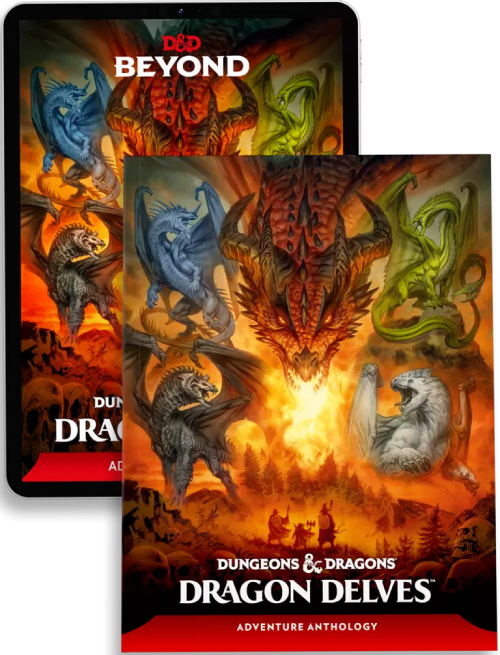
-
View User Profile
-
Send Message
Posted Sep 12, 2022True, true. The amount of role play would be incredible, and the players' tears would be very realistic as their characters died.
-
View User Profile
-
Send Message
Posted Sep 12, 2022one of my favorite mean tricks, fire breath weapon from above. 60 foot cone? How about a 30 foot radius sphere. Brutal.
-
View User Profile
-
Send Message
Posted Sep 12, 2022Well, I guess, but also what stops a dragon from just flying up 200 ft into the air and dropping the adventurers to their doom?
Well, either way all of this is really good, but useless when it's the dragon that's getting grappled.
-
View User Profile
-
Send Message
Posted Sep 13, 2022Perfect timing on this post! My players are just two sessions away from facing Cryovain for Dragon of Icespire Peak!
-
View User Profile
-
Send Message
Posted Sep 13, 2022I ran a scene for my daughter where she met a dragon disguised as an elderly elf. It was intended to be the origin story for her character's Drakewarden abilities and a hook for a side-quest that could help her integrate with the existing group.
She refused to use the dragon's name as it was 'too complicated', insisted their actual name was 'Old Elf Johnny' and kept interrupting their dying monologue to back up her battlecat with a 'meow-meow-meow' noise.
This is how *not* to run an epic dragon encounter.
-
View User Profile
-
Send Message
Posted Sep 14, 2022My thought is running them is the easier part knowing when to nerf them a bit so the players can actually fight them is where I struggle because as a intelligent creature like this why would I approach them instead of just using my breath attack and killing them with fall damage.
-
View User Profile
-
Send Message
Posted Sep 14, 2022Fantastic article, Mike!
-
View User Profile
-
Send Message
Posted Sep 15, 2022Finally some practical advice for the DM! Very helpful.
-
View User Profile
-
Send Message
Posted Sep 15, 2022The White Dragon Magic the gathering card.
-
View User Profile
-
Send Message
Posted Sep 15, 2022Did anyone get exited about the new tips on how to kill their party
-
View User Profile
-
Send Message
Posted Sep 16, 2022The extra attack for players does not allow them to make multiple grapple attempts, only attacks
-
View User Profile
-
Send Message
Posted Sep 16, 2022If you all like articles like this, The Monsters Know What They're Doing is a great resource. They have some books in print, or just at themonstersknow.com - makes encounters much more fun to design and run.
-
View User Profile
-
Send Message
Posted Sep 17, 2022-
View User Profile
-
Send Message
Posted Sep 20, 2022Its White Dragon from Adventures in the Forgotten Realms, a Magic the Gathering set.
-
View User Profile
-
Send Message
Posted Sep 21, 2022I'm preparing an adult black dragon for my PCs, and the grapple idea is awesome. Is giving the dragon proficiency in Athletics too much? The PCs are 9th level and well balanced for the most part.
-
View User Profile
-
Send Message
Posted Sep 21, 2022The one time my players "beat" an adult dragon it was only with the help of an adult bronze dragon, who promptly claimed the vanquished dragon's lair and the lions share of the dragon's hoard.
-
View User Profile
-
Send Message
Posted Sep 22, 2022but, but...I was called toxic when I tried to have my ancient green dragon actually play smart. Like a 1000 year old creature with near god-like intelligence wouldn't know some combat tactics.
-
View User Profile
-
Send Message
Posted Sep 22, 2022The problem with this article is that it assumes the statistics of Dragons match not only their challenge rating but also the intended use of both Dragons and Legendary Monsters in general. Dragons are a *boss* monster, and they should absolutely be able to both tank a party as well as engage in attacks to counter range and maneuverability (flying archers by example). Every game I have ever played in or watched on a stream runs monsters like this.
-
View User Profile
-
Send Message
Posted Sep 23, 2022Green dragons are toxic....if a party is fool enough to slap one on the muzzle or fail to heed the "subtle" warnings that the smell of chlorine wafting in the air then all bets should be off. As a DM a TPK should never be your goal, this is cooperative story telling, but giving characters every advantage and not punishing utter stupidity is part of a DM's role.